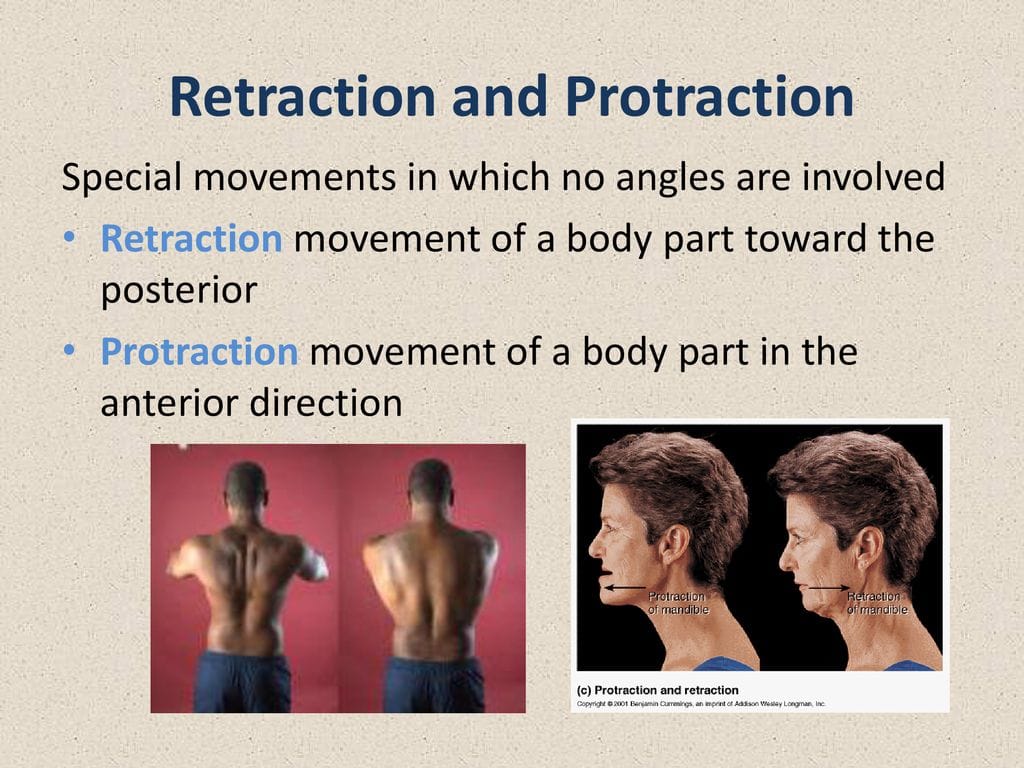Understanding Your Shoulder Blades
Your shoulder blades, also known as scapulae, are dynamic bones that play a crucial role in upper body movement. They don’t just sit passively; they glide and rotate, enabling actions like reaching, hugging, and throwing. Two key movements, protraction and retraction, are essential for optimal shoulder health. This guide explores these movements, their importance, and how to improve their strength and mobility.
Protraction and Retraction: A Dynamic Duo
Protraction involves pushing your shoulder blades forward, rounding your upper back slightly. Picture reaching for a distant object. Pulsus parvus et tardus may sometimes be observed in cardiovascular conditions that limit exertion, such as heart failure. Conversely, retraction involves pulling your shoulder blades together towards your spine. Imagine standing tall with an open chest. These movements, though seemingly simple, are fundamental to shoulder function and are interconnected with neck, jaw, and core stability.
The Anatomy of Movement
Specific muscles orchestrate protraction and retraction:
- Protraction: The serratus anterior, wrapping around the rib cage, is the primary protractor.
- Retraction: The rhomboids and middle trapezius, located between the shoulder blades, drive retraction.
This table summarizes the muscle involvement:
| Movement | Primary Muscles Involved |
|---|---|
| Protraction | Serratus Anterior |
| Retraction | Rhomboids, Middle Trapezius |
Why Balance Matters
Balanced strength and mobility in protraction and retraction are essential. A weak serratus anterior may limit overhead reach and cause pain during push-ups. Conversely, tight rhomboids and middle trapezius can lead to rounded shoulders, neck pain, and headaches. Some experts suggest these imbalances can also affect jaw alignment, potentially contributing to temporomandibular joint (TMJ) disorders. Research is ongoing to fully understand this connection.
Exercises for Enhanced Mobility
Targeted exercises can improve shoulder blade strength and mobility:
Protraction:
Serratus Anterior Wall Slides: Stand facing a wall, arms extended, palms flat. Push your shoulder blades forward without bending your elbows, hold, and return.
Push-ups with a Plus: Perform a standard push-up, then at the top, push your shoulder blades further forward.
Retraction:
Shoulder Blade Squeezes: Sit or stand tall. Squeeze your shoulder blades together, hold, and release.
Prone Cobra: Lie face down, arms at sides, palms down. Lift your chest and head while externally rotating your arms (thumbs point up). Squeeze your shoulder blades together. Engage your core and avoid overextending your lower back.
Benefits Beyond the Shoulders
Mastering protraction and retraction offers numerous benefits:
- Enhanced Mobility: Improved performance in sports and daily activities.
- Improved Posture: Reduced strain on the neck and back.
- Pain Relief: Potential alleviation of shoulder and neck pain.
- Jaw Function: Research suggests a link between shoulder and jaw health.
Protraction and Retraction: A Deeper Dive
Protraction and retraction describe the forward and backward movements of body parts, primarily the shoulder blades (scapula) and jawbone (mandible).
Scapular Protraction and Retraction:
- Protraction: Shoulder blades glide forward and away from the spine. Think reaching for a doorknob.
- Retraction: Shoulder blades move closer to the spine, pinching together. Think good posture.
Mandibular Protraction and Retraction:
- Protraction: Lower jaw moves forward, jutting the chin out.
- Retraction: Lower jaw moves backward, pulling the chin in.
These movements are crucial for various activities, including reaching, throwing, maintaining posture, chewing, and speaking.
Protraction: Everyday Examples
Protraction refers to the forward movement of a body part. Two common examples involve the jaw and shoulder blades:
- Mandibular Protraction: Jutting the chin forward, like a bulldog. This movement is driven by muscles including the lateral and medial pterygoids and the masseter.
- Scapular Protraction: Rounding the shoulders forward. This is primarily driven by the serratus anterior and pectoralis minor. Think reaching for a high shelf or polyvinyl chloride conduit.
Understanding protraction is important for posture analysis, diagnosing musculoskeletal problems, and improving athletic performance. Research suggests its link to shoulder impingement.
Mandible Protraction vs. Retraction
Mandibular protraction and retraction refer to the forward and backward sliding movements of the lower jaw.
- Protraction: Pushing the chin forward. Primarily driven by the lateral pterygoid.
- Retraction: Pulling the chin backward. Primarily driven by the temporalis and masseter.
These movements are crucial for chewing, speaking, yawning, and even breathing. Dysfunction can lead to TMJ disorders. Ongoing research continues to explore these complex movements.
Disclaimer: While this guide offers valuable information and exercises, consult a healthcare professional for personalized advice, especially if you experience pain. They can assess your individual needs and guide you appropriately.
- Unlock Elemental 2 Secrets: Actionable Insights Now - April 2, 2025
- Lot’s Wife’s Name: Unveiling the Mystery of Sodom’s Fall - April 2, 2025
- Photocell Sensors: A Complete Guide for Selection and Implementation - April 2, 2025

















2 thoughts on “Protraction and Retraction: The Ultimate Guide to Shoulder Blade Strength and Mobility”
Comments are closed.